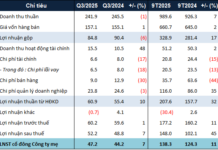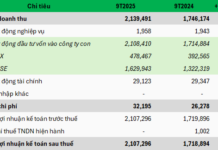Vietnam’s Automotive Industry: Accelerating Towards a Bright Future
Vietnam’s Ministry of Industry and Trade is crafting a draft strategy for the development of the country’s automotive industry, with a vision towards 2030 and beyond. According to statistics from the National Committee for Traffic Safety, in 2023, 408,542 new cars were registered nationwide, bringing the total number of registered vehicles in Vietnam to 6,312,439 by the end of that year. The car ownership rate stood at an impressive 63 cars per 1,000 people in 2023.

Forecasted rise in car ownership among Vietnamese in the coming years
Data from the Ministry of Industry and Trade reveals that in 2020, the ownership rate of passenger cars below nine seats in Vietnam was approximately 23 cars per 1,000 people, climbing to 30 cars per 1,000 people by March 2023. Notably, individuals, families, and organizations accounted for 67% of the total cars in circulation nationwide.
However, the Vietnamese automotive industry currently lags behind its regional peers in terms of market size and production volume. While 2022 witnessed the highest automobile consumption, peaking at roughly 508,000 vehicles, the Vietnamese market managed to sell only around 302,000 units in 2023, in stark contrast to Thailand’s 759,000 and Indonesia’s 887,000.
Nonetheless, experts predict a period of booming demand for passenger cars with fewer than nine seats between 2024 and 2030. This surge is attributed to Vietnam’s entry into the “motorization” phase, characterized by an average of over 50 cars per 1,000 people, coupled with the country’s GDP per capita surpassing $4,000 annually.
By 2031, it is anticipated that the automotive industry will have the capacity to produce approximately 1.9 million vehicles, including 460,000 electric cars. As outlined in the draft strategy, the Ministry of Industry and Trade has set specific goals for the industry’s growth. By 2030, they aim to achieve an average market growth rate of 14-16% per year, resulting in a total consumption of roughly 1-1.1 million vehicles.
This includes 350,000 electric and hybrid vehicles powered by solar energy, with domestically assembled cars growing at a rate of 18-20% per year, reaching a production volume of 600,000-700,000 units. In 2023, the consumption of domestically assembled cars stood at 302,000. Looking further ahead to 2045, the market growth rate is projected to be 11-12%, with a total vehicle count of 5-5.7 million.
The Domestic Auto Industry Under Threat
The imported car market is booming, and it’s outpacing the domestic automotive industry. But why are consumers increasingly opting for imported vehicles over locally-assembled cars? This intriguing trend warrants further investigation, as it could significantly impact the automotive landscape in the country.






































